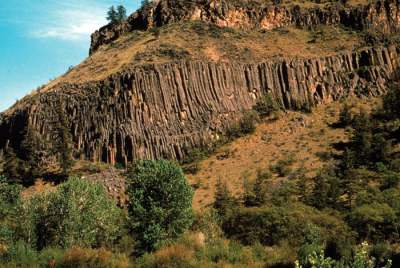Chapter 14
Earth Materials and Structure

Columnar Basalt Flows. Titon Valley, Yakima County,
Washington
Courtesy USGS
Physical geographers recognize that to uncover the spatial
relationships of earth surface phenomena they must have a good
understanding of what the Earth is composed of and how it affects
landscape development. Here we will review the fundamental
building blocks of Earth, how they change through time, and what effects they have on Earth surface processes and form.
Learning Outcomes
By the end of this chapter you should be able to:
- Diagram a cross section of the Earth's interior and describe each layer.
- Diagram the rock cycle
- Define what a mineral is and describe the major mineral families that make up most rocks.
- Describe the origin and characteristics of sedimentary, metamorphic, and igneous rocks.
- Create a diagram of intrusive igneous rock bodies.
- Compare and contrast the orders of relief.
You may view a list of chapter topics by clicking the
"Topic Outline" link or go directly to the first topic by
clicking "Continue".
Previous |
Topic Outline| Continue
|